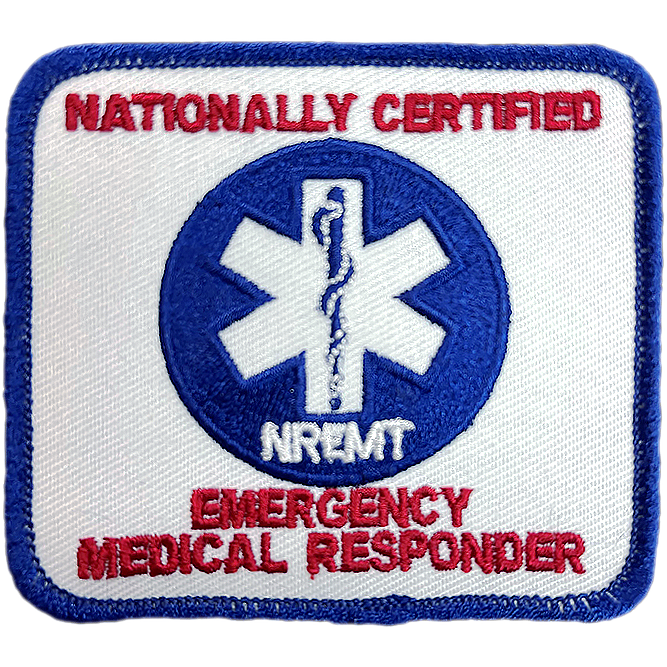
 | This course includes all the classroom and laboratory activities to prepare students for a career as an Emergency Medical Responder. |
This course covers the basic knowledge and skills for the performance of infant, child, and adult CPR and the management of foreign body airway obstruction. Emphasis is placed on recognition, assessment, and proper management of emergency care. Upon completion, students should be able to perform infant, child, and adult CPR and manage foreign body airway obstructions. This Emergency Medical Services (EMS) credential-related course must adhere to the most current guidelines established by the NC Office of Emergency Medical Services (OEMS) as applicable to this initial Emergency Medical Responder (EMR) course. This may include, but not be limited to, OEMS Education Institution approval, program director and instructor standards, classroom and distance education course approval, admissions requirements, course content, equipment standards, clinical and/or field requirements, and skills documentation. OEMS guidelines align with the rules of the NC Medical Care Commission and standards of the National Highway Traffic Safety Administration. For details, contact the Education and Credentialing Office of the NC Office of Emergency Medical Services, NC Department of Health and Human Services (NC Community Colleges, 2024).
Students may be assigned a partner for simulation activities. A schedule may be developed where each team will be responsible for responding to simulated emergencies. These simulated emergencies may occur at any time during the EMR classroom time. If your team is “on duty” for the day, you will be expected to have the assigned response equipment checked and available before start of class and left in service and available for the next class and next “on duty” team. Teams not “on duty” will be required to observe the simulated emergency.
Course Duration: 96 contact hours. Minimum of 60 hours of lecture and 36 hours of skills (skills includes exam and state scope of practice time) (NCOEMS, 2022).
Enrollment in the EMR Program.
| Day | Topics | Didactic Hours | Skills Hours |
|---|---|---|---|
| 1 | NC Scope of Practice | 2 | |
| AHA Basic Life Support (Ch 11) | 2 | 4 | |
| 2 | Ch 1 - Law Enforcement Medicine | 3 | |
| Ch 2 - Medical Standards and Responsibilities | 2 | ||
| Ch 3 - Mental and Physical Wellness | 3 | ||
| Ch 4 - Line of Duty Death | 1 | ||
| 3 | Ch 5 - Scene Management | 2 | 1 |
| Ch 6 - Environmental Hazards | 4 | ||
| 4 | Ch 7 - Rescue | 2 | 2 |
| Ch 8 - Anatomy and Physiology | 4 | ||
| 5 | Ch 9 - Physical Examination and Assessment | 2 | 6 |
| 6 | Ch 10 - Airway, Breathing, and Oxygenation | 3 | 1 |
| Ch 12 - Clinical Fundamentals | 3 | 1 | |
| 7 | Ch 13 - Medical Emergencies | 6 | 2 |
| 8 | Ch 14 - Toxicology | 1 | |
| Ch 15 - Environmental Threats | 1 | ||
| Ch 16 - Bleeding and Shock | 1 | 2 | |
| Ch 17 - Tactical Casualty Care | 1 | 2 | |
| 9 | Ch 18 - LE Considerations | 2 | 1 |
| Ch 19 - Conventional Trauma | 4 | 1 | |
| 10 | Ch 20 - Pregnancy and Childbirth | 1 | |
| Ch 21 - Pediatric Patients | 1 | 1 | |
| Ch 22 - Elderly Patients | 1 | 1 | |
| Ch 23 - Behavioral Emergencies | 1 | ||
| Ch 24 - K-9 First Aid | 1 | ||
| Ch 25 - Incarceration and Prisoner Care | 1 | ||
| 11 | Ch 26 - Deployment Preparation | 2 | 2 |
| Ch 27 - Special Missions and Responses | 1 | 3 | |
| 12 | Traffic Incident Managementhttps://learning.respondersafety.com/Clusters/National-TIM-Training-Certificate.aspx | 4 | |
| Final cognitive, psychomotor, and affective exam | 4 | ||
| TOTAL | 60 | 36 |
 | Relevant. Resolute. Ready. |  |